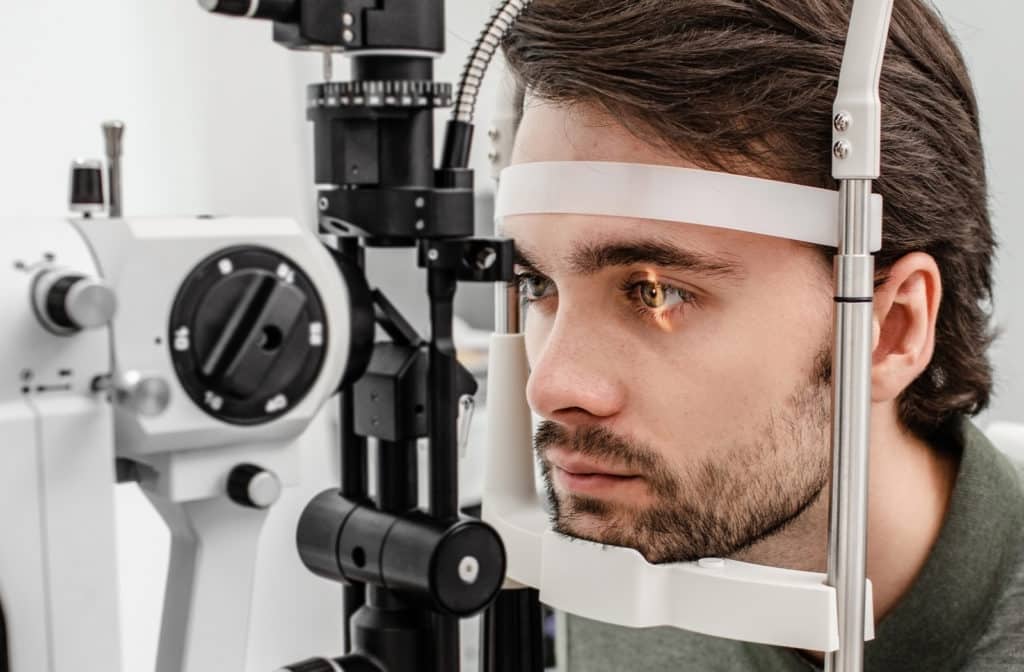Eye exams have moved far beyond reading eye charts to include exams with sophisticated equipment to analyze the health of the retina, to check for cataracts, glaucoma, age-related macular degeneration, and dry eye disease. Early diagnosis using these modern tests results in treatments that will prevent further degradation of eye health in the future. However, most group benefits plans have not modernized their coverage of eye care overall, and the Canadian Association of Optometrists (CAO) has determined that eye health and vision care has been significantly underfunded for decades.
Benefits Plans Playing Catch-Up
Because of Canada’s aging population, as well as the growing cases of diabetes, vision loss among Canadians is expected to rise. In 2007, vision loss cost the Canadian economy an estimated $19 billion, and that number could rise to $30 billion by 2030. That would be the highest direct healthcare cost of any category of disease in Canada. Yet group benefits plans often cover eye exams (minus the new technological equipment) only every two years, and only a small portion of eye glasses every two years as well. Most employees, even with a group plan, pay for most of their eye care expenses out of pocket. What can benefits planners do to catch up with the growing costs for much more thorough eyecare?
The Way Forward
Benefits managers have been faced with rising costs to cover pharmaceuticals, mental health, and dental care through the pandemic. Eye care has trailed behind. Recognizing that comprehensive routine examinations are more expensive and should have annual coverage for employees, benefits managers are seeking solutions for how they can provide better eye care.
Although most group benefit plans provide some coverage for eye exams and prescription eyewear, a significant gap exists between the expenses incurred
by plan members and the amount eligible under their vision care benefit coverage. This means that vision care is the largest personal healthcare expense for most Canadians, with 74% of all private spending on vision care expenses being out-of-pocket (versus 37% for drugs and 44% for dental). Unfortunately, this may result in delayed or neglected eye care for employees which will result in higher costs and greater loss of vision down the road.
Benefits Plan Solutions
Health Spending Accounts (HSAs) may offer some measure of help with vision care costs by allowing employees to choose how to spend their healthcare dollars. HSAs are an interim measure for employees to use for vision care needs. For example, if they have diabetes or have other risk factors for eye health, they can choose to apply more of their HSA to annual comprehensive testing. Some employees also discover that changes in their medications for other health issues result in a change in their glasses or contact lens prescriptions. HSAs allow employees to roll unspent money into the following year which can help bridge the gap when eye health exams or glasses are required between the 24 month allotted benefits.
HSAs can play a role in addressing employee eye care to an extent, but this does not obviate the need for plan providers to embark on significant vision care benefits reform. When you compare most group benefits plans dental coverage to eye care coverage, you immediately see that there is an unacceptable disparity between covering two dental checkups with cleanings per year plus a high percentage of dental treatments, while only covering the minimal eye exam and glasses every two years. Modernizing overall vision care coverage will give employees the best solution for long term eye health.
Another potential solution that benefits managers could offer is to create medically indicated benefits for specific employees. For example, the benefits plans could provide for more frequent exams and corrective lenses updates, additional diagnostics, and interventions for patients with certain eye health risk factors or conditions such as stage of life, comorbidities, or chronic disease like diabetes.
Some provinces provide expanded vision benefits for individuals with vision impairments or who have disease related vision risks. Because early detection and treatment of chronic eye diseases are essential for prevention and better patient outcomes, benefit plan members as well as employers will experience a positive impact if eye health coverage is expanded to the current standard of care.
Relative to some of the changes we are seeing provincially, Health Risk Services has several recommendations for employers to enhance their benefits programs, including expanding coverage of additional eye exams, diagnostics, frames and lenses earlier than the 24 month window when medically indicated with identifiable criteria.
Health Risk Services has been creating plans that encourage Eye Health by the use of Health Spending Accounts – the HSAs allow the employee to focus on their eye health in the manner that best suits their needs, including the more advanced testing and laser eye surgery.
We help our clients find the right benefits solutions for their workforce while maintaining sustainability and retention of their valued employees. We would like you to know more about how Health Risk Services can assist you with a 2022 plan to address changes and trends, so please schedule a Complimentary Consultation with us.
At Health Risk Services we will Empathize, Educate, and Empower you and your team in 2022!
To schedule your Complimentary Consultation with Health Risk Services, please call 403-236-9430 OR email: [email protected]













